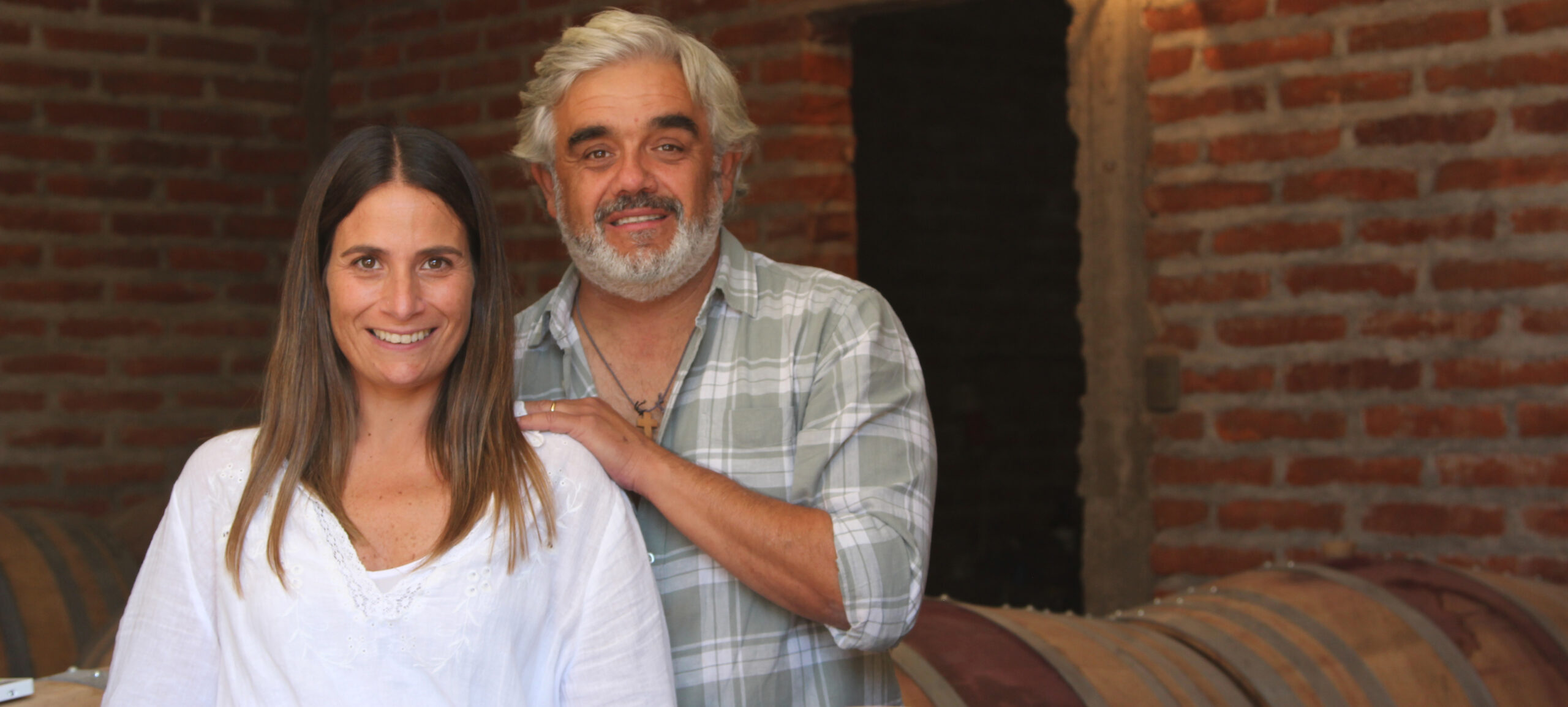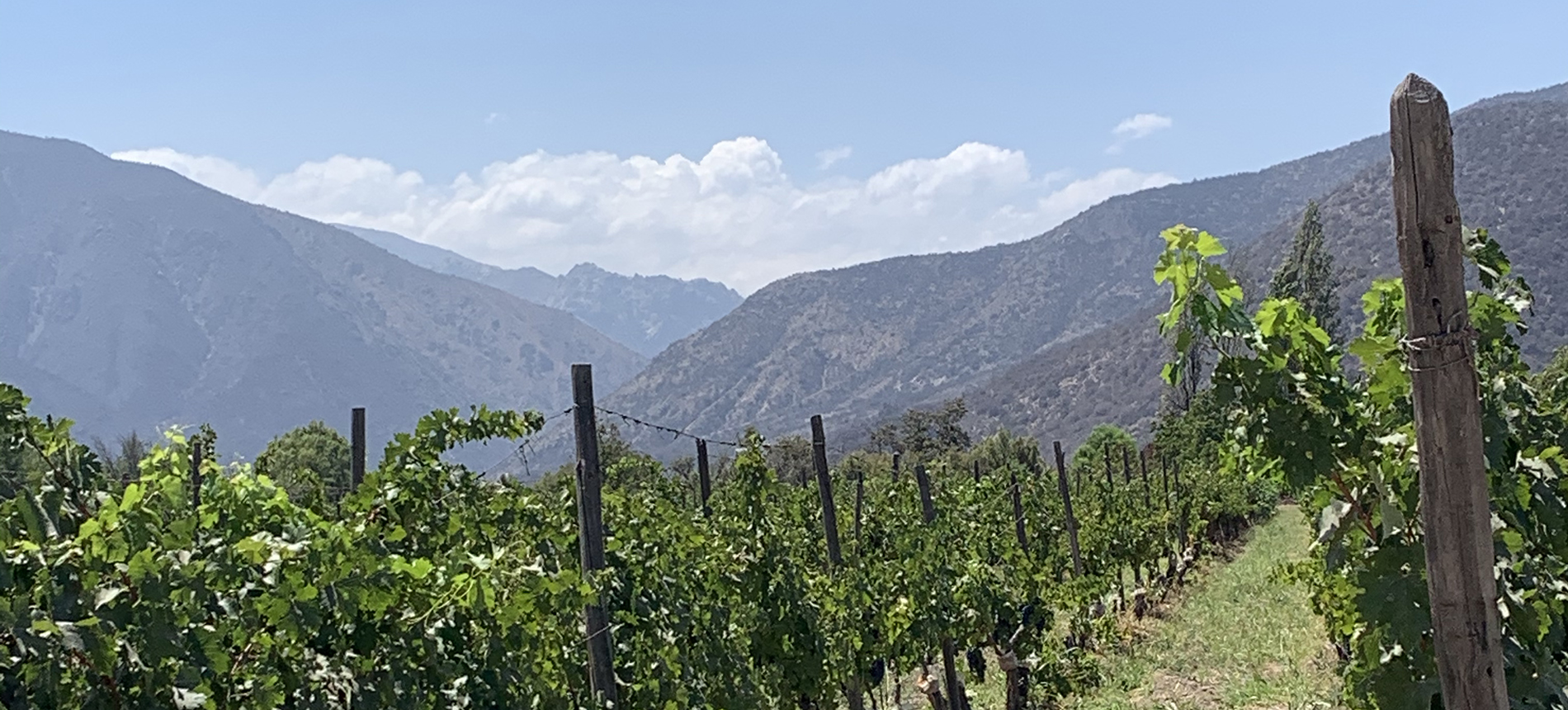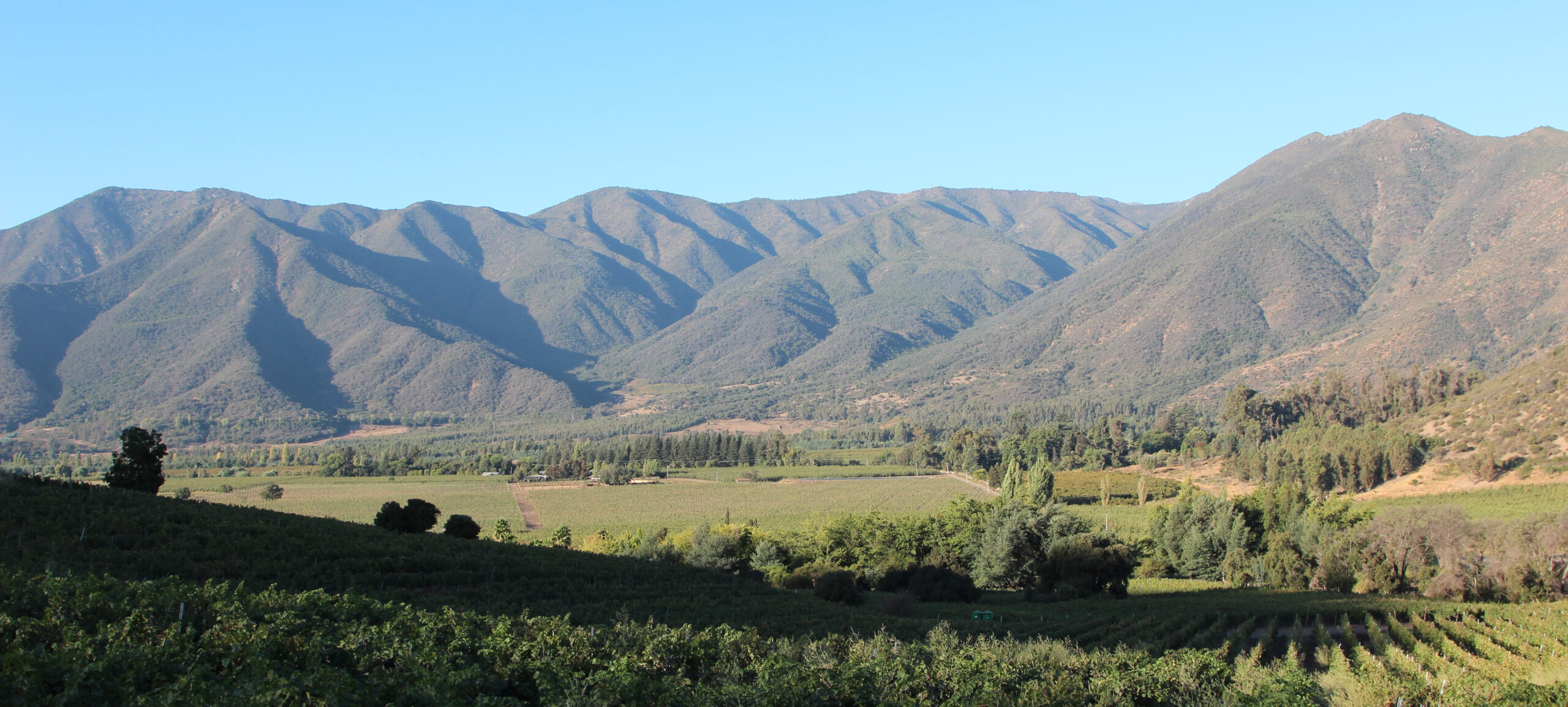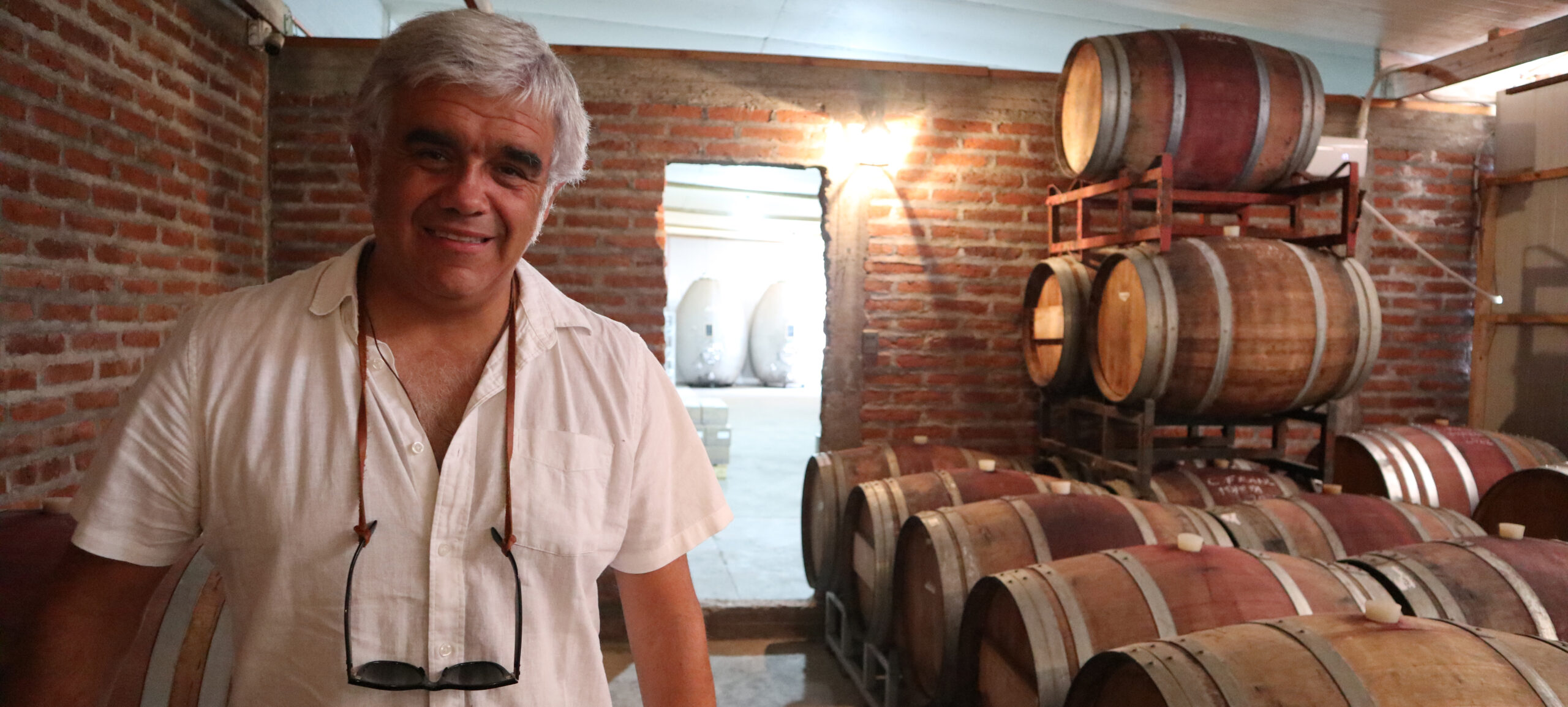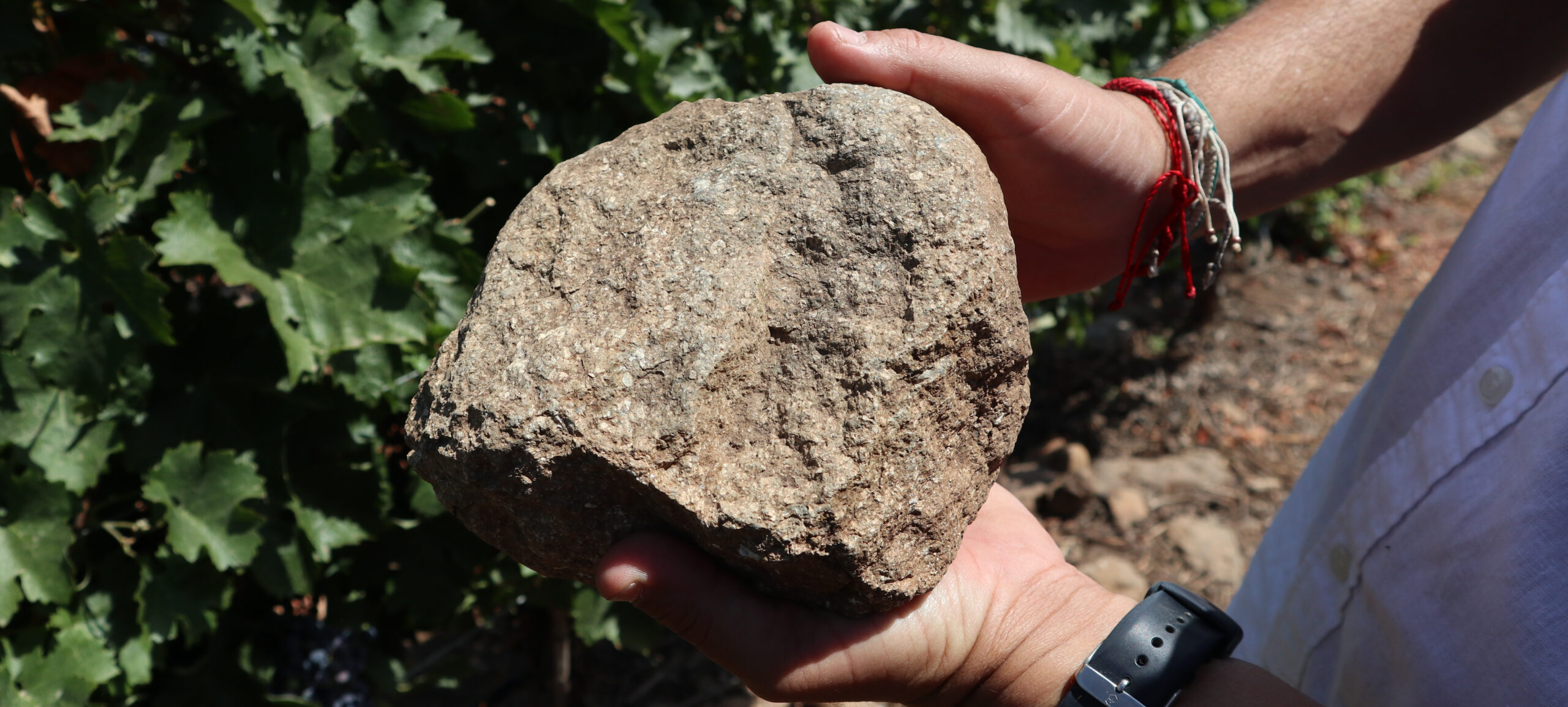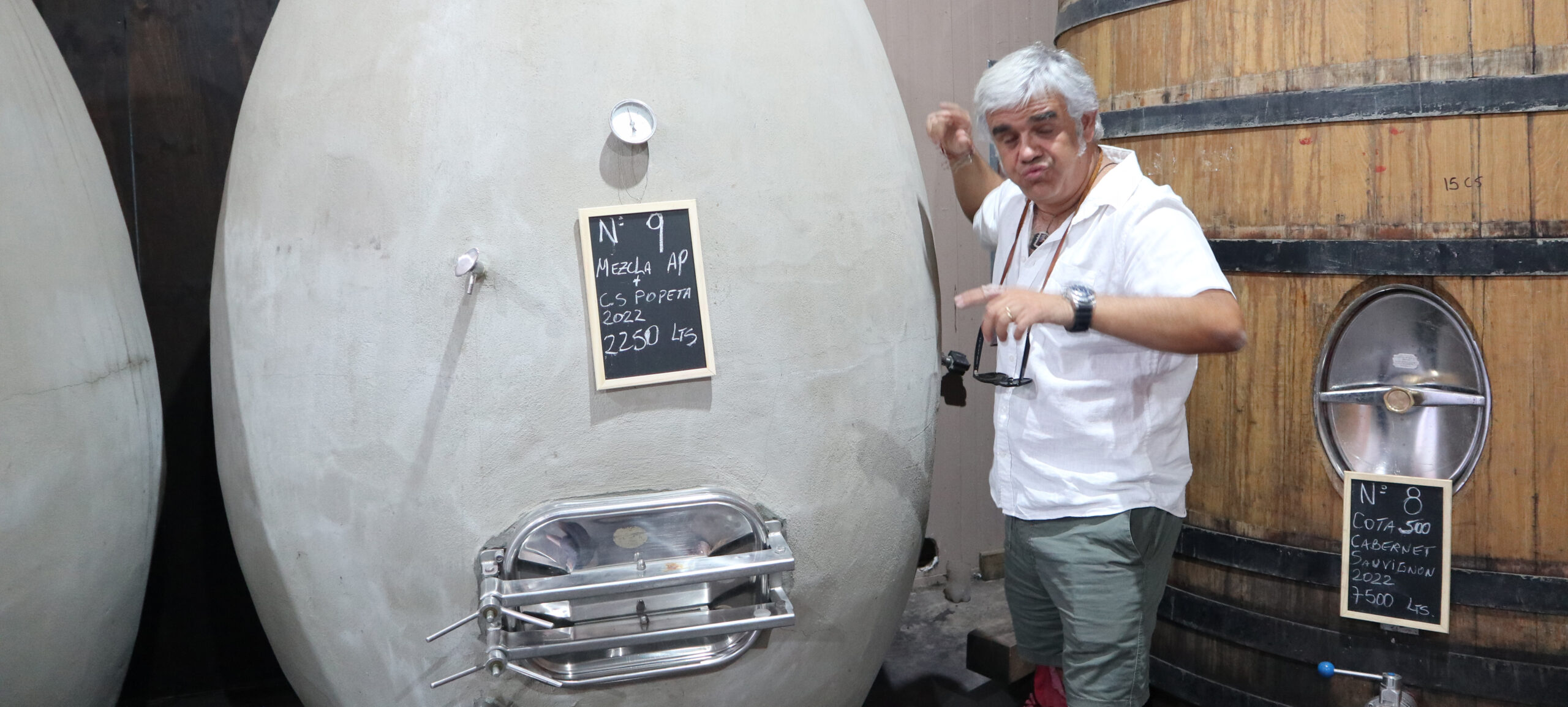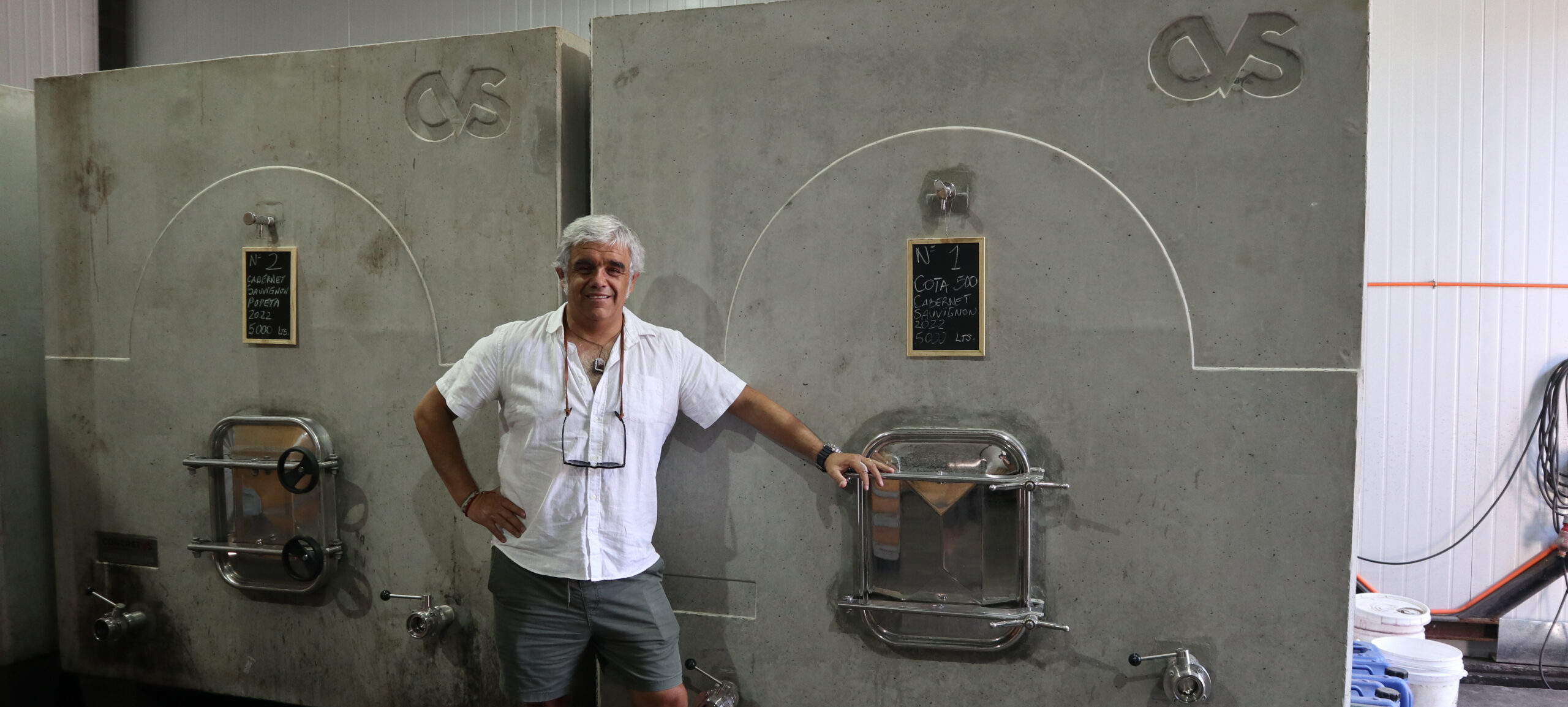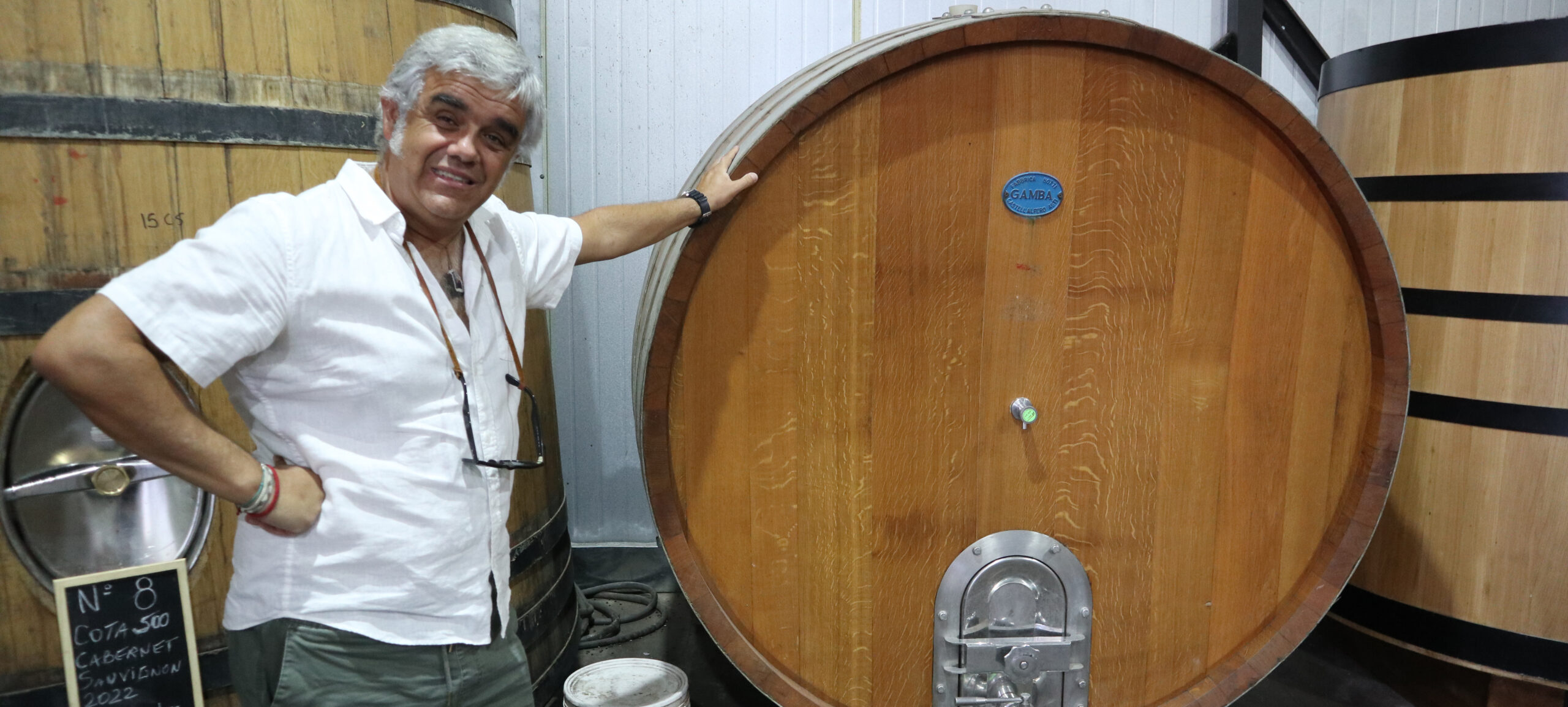Andes Plateau in the Maule Valley of Chile is a family winery centered on their passion for mountain wines! The husband-and-wife team of Felipe Uribe and Maite Hojas had their first harvest in 2012. Maite worked as a winemaker for Santa Helena. Felipe has worked in Chile for several top wineries including Santa Helena, De Martino, Miravalle, and William Fevre in the Maipo. He has also worked in the US at La Crema in Sonoma Valley. It was at William Fevre that Felipe fell in love with the vineyards in the Andes mountains and the distinctive wines that this rugged and extreme terroir can produce. So when he and Maite decide to take the plunge to start their winery, it had to be in the mountains. Few, in Chile, risk working in the mountains because of the frost…but Felipe and Maite believe the reward outweighs the risk.
We were introduced to Felipe and Maite’s project by their good friend Pedro Parra who is a world-renowned soil expert as well as somewhat of a guru for the new wave of small producers in Chile who are championing the amazing variety of soils, terroirs, and grape varieties that this viticulturally diverse country has to offer. Like Pedro, they have a similar viewpoint on viticulture and winemaking. At Andes Plateau, their vineyards are mostly Cabernet and Chardonnay (they have some Syrah, Cabernet Franc, and Merlot also) grown IN the Andes mountains. The beginning point is above 500 meters (the foothills of the Andes) hence the line of wines named Cota 500, but they also work even higher with a line called Cota 700. The benefits of the mountains are very cool nights and fresh winds that keep the plants healthy and slow the ripening process resulting in wines with good intensity but also freshness and balance. Think Cabernet with a pH of 3.5!!
Geologically speaking, the Maule River and the mountains provide a blend of both Alluvial soils (those brought to their resting place by the river) and Colluvial soils (those rocks that are created from erosion of the mountains from wind and rain). The combination of alluvial and colluvial soils leaves complex mixes of gravel, sand, and silt from the river and larger rock fragments of schist, granite, volcanic clays, and more from the even higher elevations of the mountains. These mineral soils are perfect for growing the kinds of wines that they want to produce.
Beyond these spectacular terroirs, they approach the winemaking with some basic rules – no cultivated yeasts, no acidification, and only a very small dose of sulfur before bottling. The winery is built of very thick walls of mud which maintain cool and stable temperatures for fermentation and aging. The wines often age in 3,000 liter old French foudres which ultimately provide shape and texture to the wines rather than a strong oak influence. Stylistically, these are not big, over-the-top wines, but are cut from a cloth of intense yet elegant and energetic wines that keep bringing you back for another sip!
